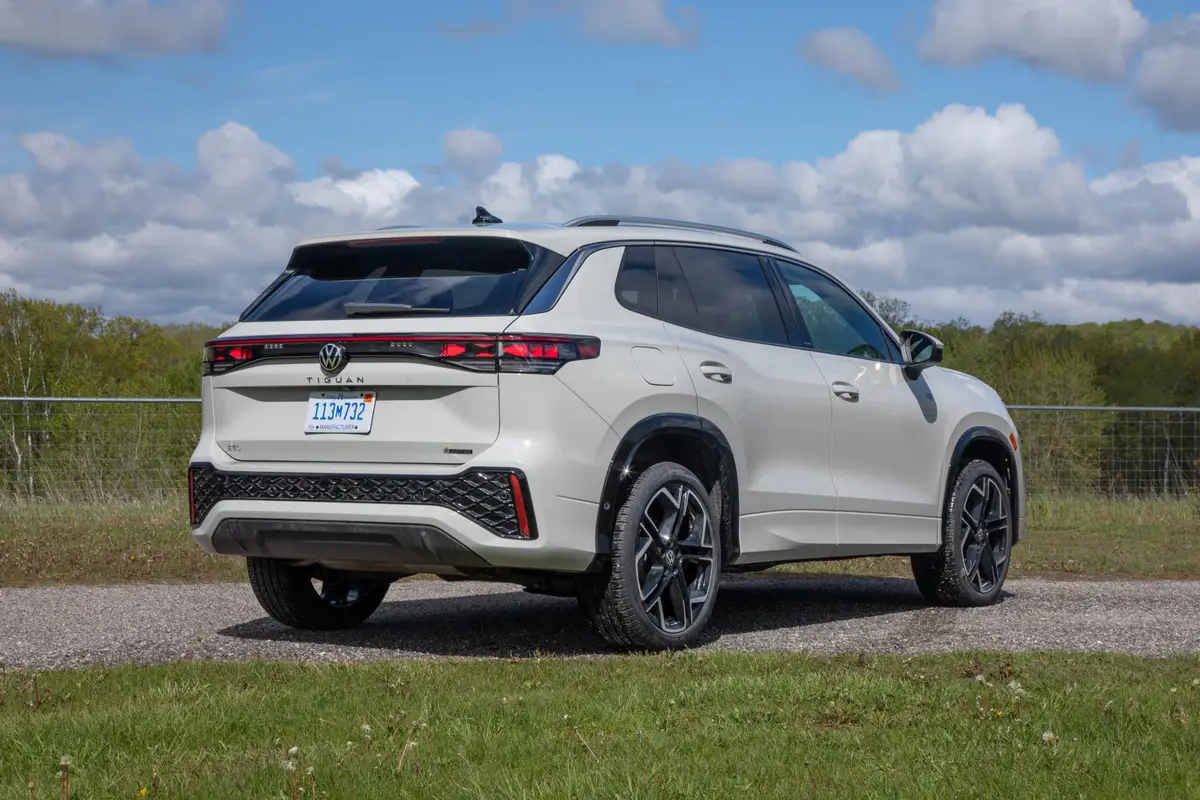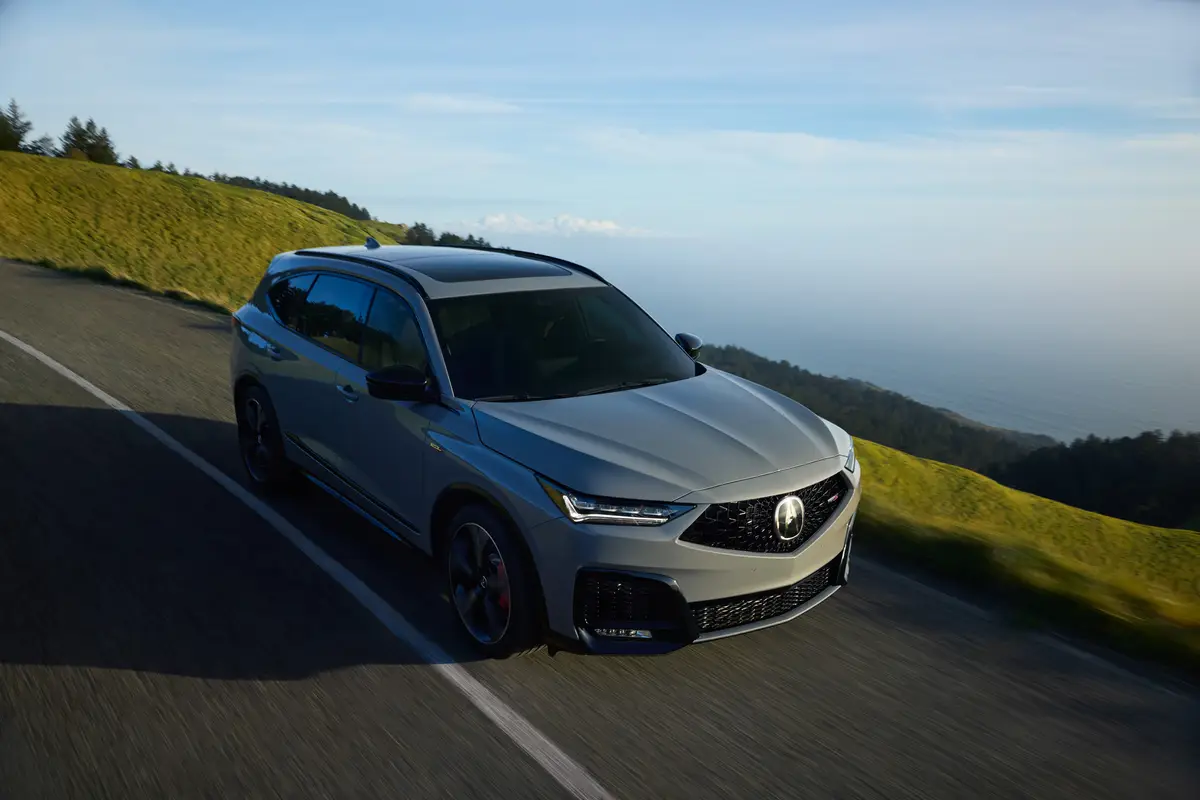chicagotribune.com's view
A 3,587-pound security blanket.
That’s the 1994 Pontiac Bonneville SSEi.
Wrap it around you and take off.
There’s an unwritten code among auto writers who don’t live in Florida or Arizona that says, “Save the sporty cars for June and July and the four wheelers for January and February.”
The code was violated when a 1994 Pontiac Bonneville SSEi arrived in the driveway moments before 12 inches of snow.
But, since the show must go on, and, as the boss says, the column must be written, we dusted off the windows, scraped off the glass, had No. 1 twin shovel the blacktop behind the SSEi and joined the mayhem on the highway turned luge run.
The “i” behind those SSE letters means the Bonneville is powered by a 3.8-liter, 225-horsepower, supercharged, V-6 engine. Just what you need when the roads are invisible.
After just a few blocks, however, we found that the “i” also stood for insurance-that while others around us were slipping and sliding and dipping into ditches hood ornament first, the SSEi had absolute control of the road.
The supercharger goes to work only when you kick the pedal hard to pass, such as when the roads are dry and clear and you have to change lanes to avoid Volvo owners tiptoeing in the center of the road at 25 miles per hour.
But when the roads are impassable you don’t have to worry about a supercharger and too much power getting you in trouble. The supercharger takes a siesta until you press that accelerator hard, and when there’s 14 inches of snow on the ground, you aren’t going to exercise your lead foot.
The SSEi has independent front and rear suspension with automatic leveling, variable effort power steering and 16-inch tires. In good weather than means sure-footed ride and handling and responsive maneuvering. In bad weather it meant the same because we weren’t jolted when driving from plowed pavement to mounds of snow or ice and when changing lanes to avoid Volvo drivers. The steering was precise without being stiff, which would force the driver to turn the wheel too hard to compensate, or too light, which would allow the car to wander without direction.
The SSEi comes with standard four-wheel anti-lock brakes. They were put to good use when a pickup plowing a restaurant parking lot forgot to look to see whether any cars were approaching before dumping the snow from the lot onto the highway so the state plows could finish for free what he was getting paid to do. The Bonneville stopped without a rear-end rumba.
Most impressive, however, is that the SSEi has traction control. When taking off from the light, when pulling out to pass a Volvo, when making the sweeping turn on the Ohio Street bridge after exiting the Kennedy, you could hear a muted whine from under the hood, evidence that the computers were telling the sensors to control wheel spin so the tires got the optimum traction on what there was of the roadway. With traction control, you can put pressure on the accelerator while those around you apply the brakes.
Cars and trucks around us tapped-danced or tiptoed while the SSEi kept pointing its nose toward our destination. While fellow motorists clutched their steering columns with such force you could see their knuckles turn white, we used our fingers to press the controls in the steering wheel hub that adjusted radio station and volume.
The SSEi’s engine, suspension, brakes and steering work in harmony with one another. Just in case some nitwit on the road should force you to strike a sour note, dual air bags are standard to offer occupant protection.
In the past we’ve appreciated the SSEi as an above-average sports sedan with excellent off-the-line or down-the-merger-ramp or into-the-passing-lane performance.
But performance has to be measured in other terms, too, in a car’s ability to start and stop on snow and icea d to serve as a year-round chariot to cart you to work or the store or school or church or the mall when other cars have to be garaged until the spring thaw.
The SSEi behaves as you would expect a four-wheeler to perform when the highways are miserable, yet it has plenty of muscle to flex when the highways are clean.
Base price is $25,884. Standard equipment includes air conditioning; rear-window defogger; power windows and door locks; tilt steering with cruise control; AM/FM stereo with cassette and controls in the steering wheel; illuminated entry; pass key theft deterrent, which requires a key with a specific transistor to operate the ignition; rear spoiler; fog lamps; tinted glass; heated dual outside power mirrors; dual visor mirrors; six-way power driver’s seat; and a ground-effects package with plastic rocker panel moldings and louvered door panels.
Our test car added remote keyless entry, a head-up windshield display of the digital speedometer reading, upgraded air to electronic control, upgraded radio with eight speakers, power passenger seat and traction control in a $1,440 package. To convert the SSE into the i, the car added the supercharged V-6, larger tires and floor mats in a $1,167 package. The sticker came to $28,491. Add a $575 freight charge.
If you have the money you can load the SSEi with all the creature comforts. But what makes this an exceptional car are the money-can’t-buy things-the sense of security, the peace of mind, the absence of tension behind the wheel regardless of road surface. With the SSEi these all come as standard.
1994 Pontiac Bonneville SSEi
Wheelbase: 110.8 inches
Length: 201.1 inches
Engine: 3.8 liter, 225 h.p., V-6.
Transmission: 4-speed automatic.
Fuel economy: 17 m.p.g. city/25 m.p.g highway.
Strong point: Top performance in any weather. Dual air bags and ABS standard, traction control an option.
Weak point: We’ll holler when we think of something.
Latest news



